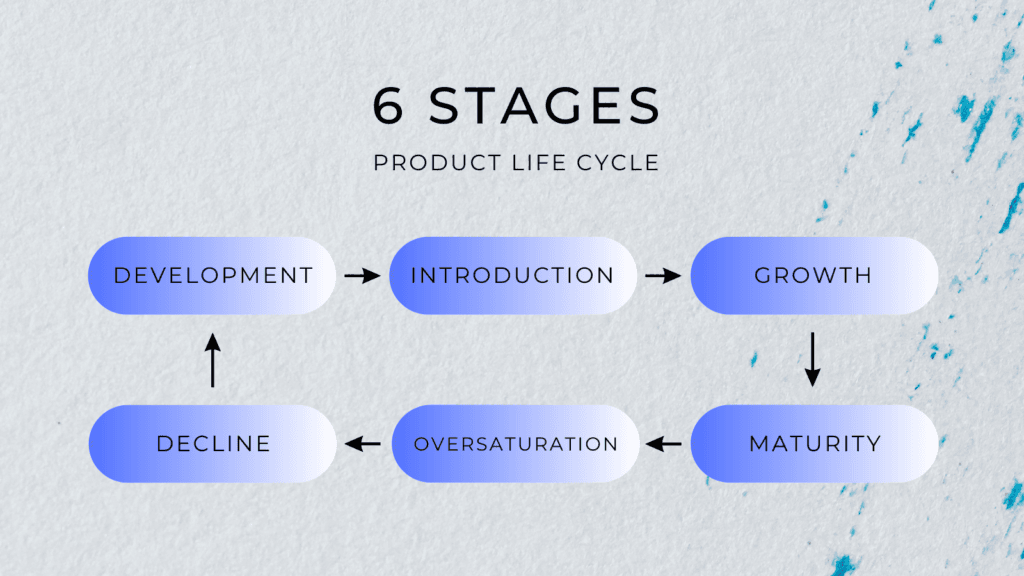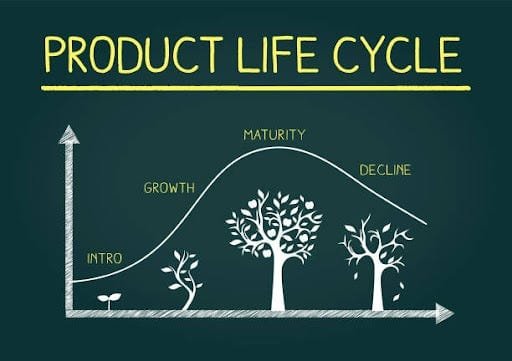
Developing a product that captures market interest and fulfills customer needs involves a structured, strategic approach. The stages of product development are crucial steps that guide a concept from initial ideas to market launch, ensuring that each element of the product resonates with its intended audience. This structured process is often used by businesses across various industries, including software, technology, and consumer goods. Understanding each stage can help businesses streamline their development approach and increase the likelihood of product success.
The Stages of Product Development Cycle

In this article, we will cover the stages of product development, from concept generation to post-launch review. These stages include idea generation, screening, concept development, business analysis, product development, testing, market launch, and post-launch review. Each stage has its own set of activities, and adhering to them helps minimize risk, enhance market fit, and ultimately ensure a successful launch. This guide will particularly appeal to those interested in understanding the product development journey, including businesses looking to collaborate with a website development company in Delhi for digital product solutions.
- Idea Generation: The First Stage of Product Development
The first stage of the product development process is generating ideas. In this phase, the company gathers innovative ideas from various sources, including brainstorming sessions, customer feedback, competitor analysis, and market research. Teams often rely on tools like SWOT analysis to assess strengths, weaknesses, opportunities, and threats in the current landscape, allowing them to generate relevant, valuable ideas.
Companies may also use open innovation platforms to involve external stakeholders in the ideation process, which can provide unique insights and diversify the range of concepts under consideration. By conducting ideation in a structured way, businesses can amass a pool of ideas that may lead to a viable product.
- Idea Screening
After generating ideas, companies proceed to the idea screening phase. Here, teams filter through the ideas gathered to select only those with potential. This selection process involves assessing each idea against company goals, market feasibility, cost considerations, and alignment with target customer preferences.
Screening effectively eliminates ideas that may be too costly, irrelevant, or unfeasible, saving valuable time and resources for the company. At this stage, it’s essential to be objective and thorough, as bypassing unfit ideas early on can prevent potential losses and help keep development efforts focused.
- Concept Development and Testing
Once ideas are screened, the next stage involves developing concepts for the selected ideas. Each concept undergoes further refinement to define the target market, product specifications, positioning, and unique selling proposition (USP). Concept testing follows, which involves presenting the concept to a target audience or conducting focus groups to gauge interest and gather feedback.
This stage ensures that the concept resonates with potential customers before significant investments are made. Positive feedback during concept testing may encourage moving forward, while negative feedback may indicate the need for modifications or even reconsideration of the concept.
- Business Analysis
In the business analysis phase, companies assess the financial viability of the product concept. Key considerations include projected costs, pricing strategy, profit margins, sales forecasts, and potential return on investment (ROI). A comprehensive financial analysis helps companies identify whether the concept aligns with their business objectives and provides a realistic view of the product’s potential success.
At this stage, teams might engage stakeholders and decision-makers to review the analysis and approve the budget required for further development. Business analysis is critical as it sets the financial foundation for the project, ensuring that resources are allocated efficiently.
- Product Development
With approval from the business analysis stage, the actual product development process begins. Engineers, designers, and developers collaborate to create a prototype or beta version of the product. This phase is highly collaborative and requires cross-functional teams to work closely to bring the concept to life.
For software or web products, a website development company in Delhi can provide technical support and expertise in building digital prototypes or full-scale products. Physical products undergo similar prototype creation, where the focus is on building and refining the design and functionality to match the initial concept.
- Testing and Validation
Testing and validation ensure that the product performs as intended and meets quality standards. This stage involves extensive testing for usability, functionality, durability, and safety. Testing protocols vary depending on the type of product but often include user testing, quality assurance, and performance analysis.
The feedback from testing is essential as it reveals any improvements or changes needed before launch. In digital products, this stage may include beta testing with a limited audience to gain user insights and optimize features.
- Market Launch: The Last Stage of New-Product Development Process
The last stage of the new-product development process is the market launch. In this phase, the company develops a go-to-market strategy, including marketing campaigns, distribution channels, and sales tactics. A successful launch requires thorough preparation, as first impressions can significantly influence customer reception and overall market performance.
Marketing teams work to create awareness, generate demand, and establish the product’s brand identity in the market. Companies may collaborate with external agencies or digital marketing firms to ensure a widespread and impactful launch, with special emphasis on reaching the target audience through appropriate platforms.
- Post-Launch Review and Refinement
After launching the product, companies move to the post-launch review stage. This phase involves gathering customer feedback, monitoring performance metrics, and assessing customer satisfaction. Insights from the post-launch phase provide essential information for potential improvements, helping the company refine the product based on actual user experience.
A website development company in Delhi, for example, may assist in post-launch improvements for web products by optimizing features and enhancing user interfaces based on initial feedback. This stage is ongoing, with companies often making iterative changes to align the product better with customer needs and market trends.
Conclusion
The stages of product development form a comprehensive roadmap for transforming ideas into market-ready products. Following each stage—from idea generation to post-launch refinement—enables companies to reduce risks, maximize resources, and enhance their product’s potential for success. This process benefits businesses of all sizes, including those collaborating with a website development company in Delhi for digital solutions.
In a competitive market, adhering to these structured stages helps companies stay focused and agile, making it easier to adapt to changes and innovate. Whether it’s a tech startup developing a new app or an established company creating a physical product, the stages of product development provide a foundation for creating high-quality, impactful products that meet market demands and foster customer loyalty.
